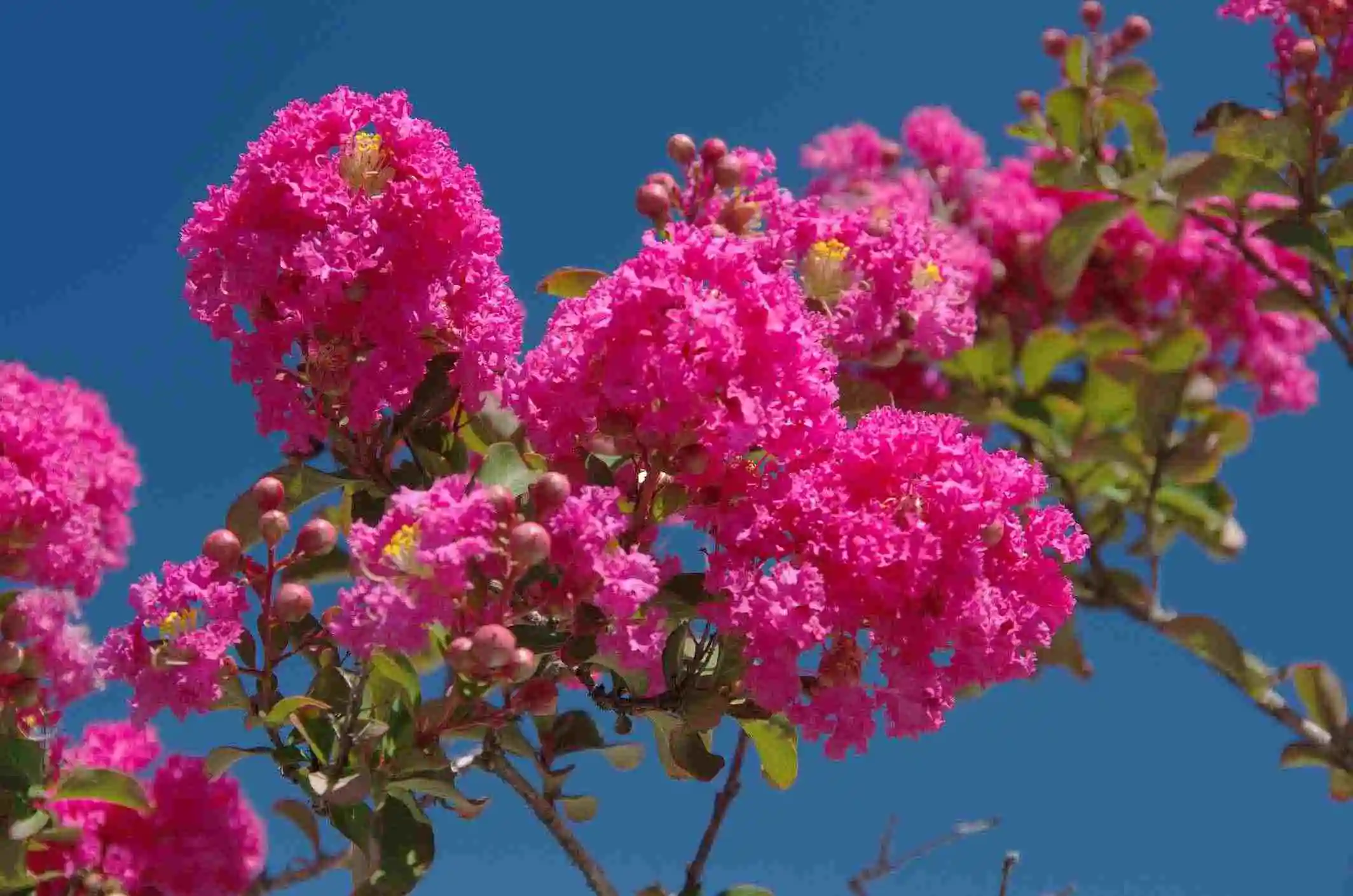
Pink Flowering Trees: A Comprehensive Guide
Pink flowering trees are a stunning addition to any landscape, providing vibrant color and beauty during the blooming season. These trees not only enhance the aesthetic appeal of gardens and yards but also attract pollinators and provide shade. This article will explore various types of pink flowering trees, their characteristics, care requirements, and how to incorporate them into your landscape design.
Understanding Pink Flowering Trees
Why Choose Pink Flowering Trees?
- Aesthetic Appeal: The delicate pink blooms create a visually striking display that can transform any outdoor space.
- Seasonal Interest: Many pink flowering trees bloom in spring, providing a burst of color after the winter months.
- Wildlife Attraction: These trees often attract bees, butterflies, and birds, contributing to a healthy ecosystem.
Types of Pink Flowering Trees
There are numerous species of pink flowering trees, each with unique characteristics. Below is a table summarizing some popular varieties:
| Tree Name | Scientific Name | Bloom Time | Height Range | USDA Hardiness Zones |
|---|---|---|---|---|
| Crape Myrtle | Lagerstroemia indica | Late spring to fall | 10-25 feet | 6-9 |
| Pink Dogwood | Cornus florida var. rubra | April to May | 15-25 feet | 5-9 |
| Eastern Redbud | Cercis canadensis | Early spring | 10-25 feet | 4-9 |
| Pink Trumpet Tree | Tabebuia rosea | Spring | 25-40 feet | 10-11 |
| Persian Silk Tree | Albizia julibrissin | Summer | 20-30 feet | 6-11 |
| Japanese Cherry Blossom | Prunus serrulata | March to April | 15-25 feet | 5-8 |
| Flowering Almond | Prunus triloba | Early spring | 8-10 feet | 4-8 |
| Pink Wisteria | Wisteria floribunda | Late spring | 10-25 feet | 4-9 |
Detailed Descriptions of Popular Pink Flowering Trees
Crape Myrtle (Lagerstroemia indica)
Crape myrtle is a small deciduous tree celebrated for its stunning pink flowers that bloom from late spring until early fall. The flowers have a crinkled texture resembling crepe paper, which adds to their charm. Crape myrtles thrive in hot climates and prefer well-drained soil.
Care Requirements:
- Light: Full sun
- Soil: Well-drained, adaptable to various soil types
- Watering: Moderate; drought-tolerant once established
Pink Dogwood (Cornus florida var. rubra)
The pink dogwood is a favorite among gardeners for its large, showy flowers that appear in early spring. The tree has a rounded shape and produces beautiful pink blooms that turn into red berries in the fall.
Care Requirements:
- Light: Full sun to partial shade
- Soil: Well-drained, slightly acidic soil
- Watering: Regular watering during dry spells
Eastern Redbud (Cercis canadensis)
The Eastern redbud is known for its tiny, hot pink flowers that cover its branches in early spring before the leaves emerge. This native tree is adaptable and can thrive in various soil types.
Care Requirements:
- Light: Full sun to partial shade
- Soil: Well-drained soil
- Watering: Moderate; drought-tolerant once established
Pink Trumpet Tree (Tabebuia rosea)
The pink trumpet tree features large trumpet-shaped flowers that bloom on leafless branches, creating a breathtaking display. It prefers warm climates and well-drained soils.
Care Requirements:
- Light: Full sun
- Soil: Well-drained, adaptable to various soil types
- Watering: Low; drought-tolerant once established
Persian Silk Tree (Albizia julibrissin)
This ornamental tree boasts unique pink flowers with long silky strands that create an umbrella-like canopy. It is relatively drought-tolerant and can thrive in various soil conditions.
Care Requirements:
- Light: Full sun
- Soil: Well-drained soil
- Watering: Low; drought-tolerant once established
Japanese Cherry Blossom (Prunus serrulata)
Famous for its breathtaking beauty, the Japanese cherry blossom tree produces delicate pink flowers in early spring. These trees are often associated with cultural festivals and celebrations.
Care Requirements:
- Light: Full sun
- Soil: Well-drained, slightly acidic soil
- Watering: Regular watering during dry spells
Flowering Almond (Prunus triloba)
The flowering almond tree features fluffy pink blooms in early spring. It can be grown as a shrub or small tree and adds charm to any landscape.
Care Requirements:
- Light: Full sun to partial shade
- Soil: Well-drained soil
- Watering: Regular watering during dry spells
Pink Wisteria (Wisteria floribunda)
While technically a vine, pink wisteria can be trained to grow as a small tree or shrub. Its cascading clusters of fragrant pink flowers create a romantic atmosphere in gardens.
Care Requirements:
- Light: Full sun to partial shade
- Soil: Well-drained soil
- Watering: Moderate; regular watering during dry spells
Designing Your Landscape with Pink Flowering Trees
Choosing the Right Location
When selecting where to plant your pink flowering trees, consider the following factors:
- Sunlight Exposure: Most flowering trees require full sun (6 or more hours of direct sunlight) for optimal blooming.
- Space Requirements: Ensure there is enough space for the tree to grow to its mature size without overcrowding other plants.
- Soil Conditions: Test your soil’s drainage and pH levels to ensure they meet the needs of the chosen tree.
Planting Tips
- Digging the Hole: The hole should be twice as wide as the root ball but no deeper than the root ball itself.
- Amending Soil: Mix organic matter into the soil if it is poor or clay-heavy.
- Watering After Planting: Water thoroughly after planting to help settle the soil around the roots.
Maintenance of Pink Flowering Trees
Pruning Techniques
Regular pruning helps maintain the shape and health of your trees:
- Timing: Prune in late winter or early spring before new growth begins.
- Removing Dead Wood: Cut away any dead or diseased branches.
- Shaping the Tree: Trim back excessive growth to maintain an attractive shape.
Fertilization
- Use a balanced fertilizer in early spring before blooming begins.
- Follow package instructions for application rates based on tree size.
Pest Management
- Monitor for common pests such as aphids or spider mites.
- Use insecticidal soap or neem oil as organic treatments if infestations occur.
Frequently Asked Questions (FAQ)
Q1: What are some popular pink flowering trees?
A1: Popular options include Crape Myrtle, Pink Dogwood, Eastern Redbud, Pink Trumpet Tree, and Japanese Cherry Blossom.
Q2: When do these trees typically bloom?
A2: Bloom times vary by species but generally occur in early spring through summer.
Q3: How tall do these trees grow?
A3: Heights range from small shrubs at about 8 feet to larger trees reaching up to 40 feet tall.
Q4: Are these trees suitable for all climates?
A4: Most species have specific USDA Hardiness Zones; it’s essential to choose varieties suited for your climate.
Q5: How do I care for my pink flowering tree?
A5: Provide adequate sunlight, water regularly during dry periods, prune as needed, and monitor for pests.
Conclusion
Pink flowering trees bring beauty and vibrancy to landscapes while supporting local ecosystems by attracting pollinators. By understanding their characteristics and care requirements, you can successfully incorporate these stunning trees into your garden or yard design. Whether you choose an elegant dogwood or a majestic cherry blossom, these trees will enhance your outdoor space year after year.For more detailed information about flowering trees and gardening practices, consider visiting Wikipedia.


